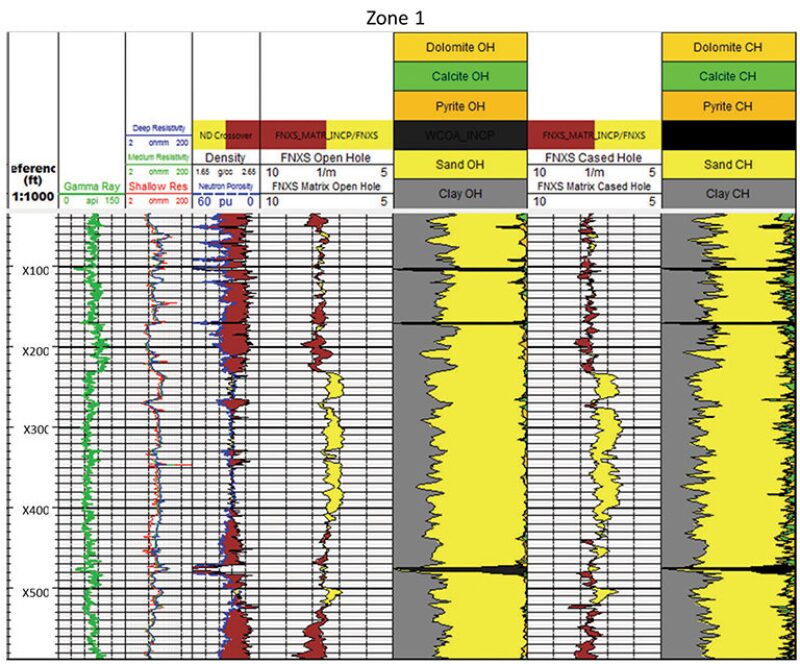This paper compares the results of gas identification and lithology identification using pulsed-neutron spectroscopy in openhole and casedhole environments. Most pulsed-neutron tools are run after casing; this study provides a unique opportunity to examine the effect of casing on spectroscopy by comparing casedhole measurements to measurements taken in the open hole before the casing was run.
Introduction
Pulsed-neutron logging has evolved over the last 50 years, but the intrinsic physical measurements have remained unchanged, which means that operators cannot obtain a complete picture of the rock and fluids behind casing with conventional tools. However, advances in tool design and a new fast-neutron cross-section (FNXS) measurement provide for an alternative gas-identification technique. Gas in open holes is typically identified from neutron porosity and gamma-gamma density crossover.


